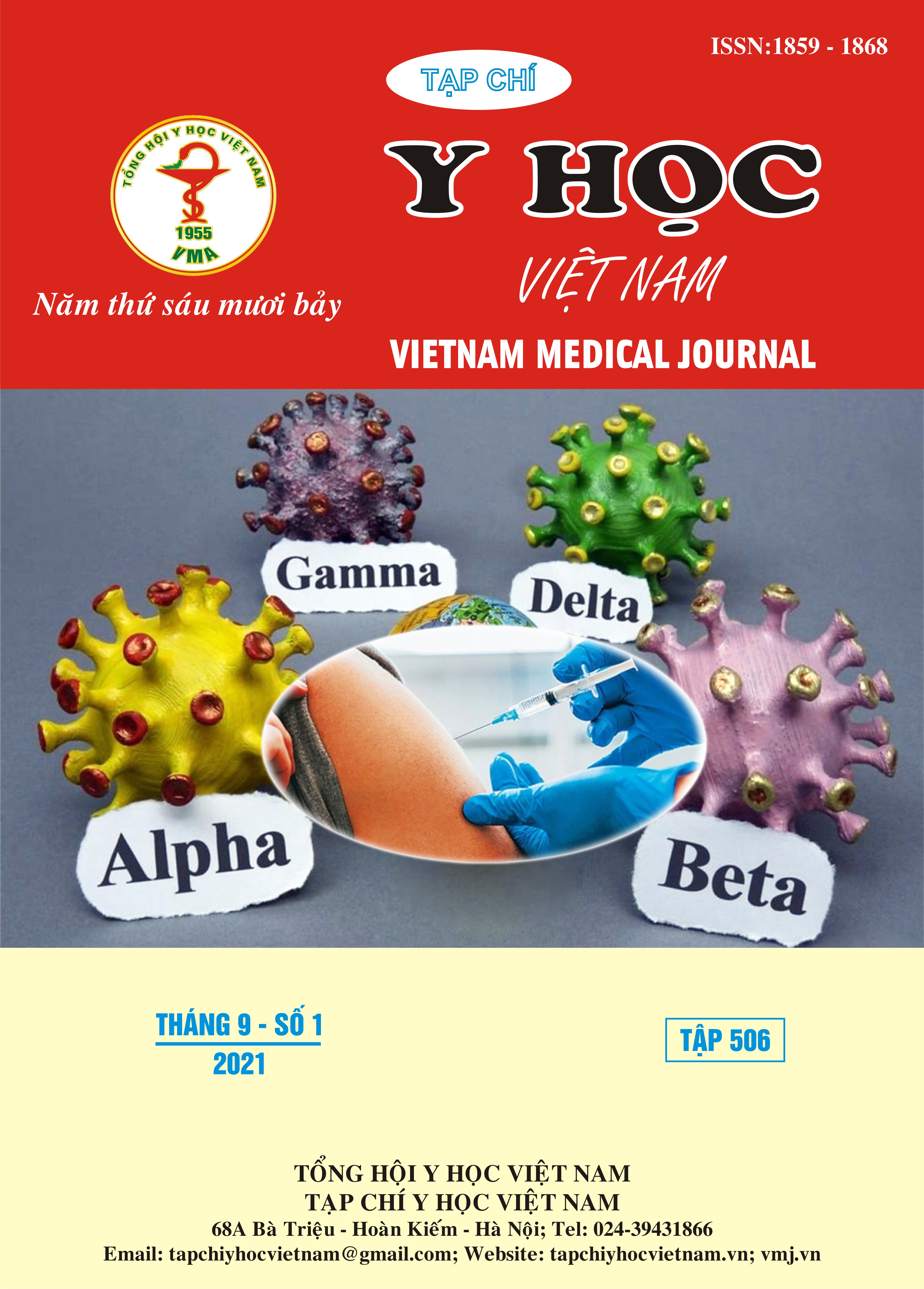PROGNOSTIC ROLE OF 18F-FDG PET/CT STANDARD UPTAKE VALUES IN ESOPHAGEAL SQUAMOUS CELL CARCINOMA PATIENTS TREATED WITH DEFINITIVE CHEMORADIOTHERAPY
Main Article Content
Abstract
Objectives: The aim of this study was to investigate whether standard uptake values (SUV) of pre-treatment 18F-FDG PET/CT were helpful for predicting the outcomes in esophageal squamous cell carcinoma patients treated with definitive chemoradiotherapy. Materials and methods: Sixty patients with esophageal squamous cell carcinoma who underwent 18F-FDG PET/CT and received definitive chemoradiotherapy. 18F-FDG SUVs of tumor including SUVmax, SUVmean, SUVpeak were calculated. The receiver operating characteristic curve (ROC) was used to determine the optimal SUVs cut-off value that associated with response and survival. Using Kaplan-Meier for overall survival (OS) and progression-free survival (PFS) analysis. Multivariate analysis of survival was performed using Cox regression. Results: Complete response was achieved in 38,3%. The 4-year overall survival (OS) and progression-free survival (PFS) rates were 48.6% and 44.4%, respectively. SUVmean with a cut-off value of 6.1 could predict complete response with sensitivity of 69.6%, specificity of 78.4%, and accuracy of 75%. SUVmean > 6.1 was a unfavorable prognostic factor for OS (HR = 6,74, p = 0.02) and PFS (HR = 6.53, p = 0.00). Conclusions: Our study suggests that SUVmean of the primary tumor in pretreatment 18F-FDG PET/CT may be used in predicting the outcomes for esophageal squamous cell carcinoma patients treated with definitive chemoradiotherapy.
Article Details
Keywords
18F-FDG PET/CT, standard uptake values (SUVs), ), esophageal squamous cell carcinoma
References
2. Atsumi K., Nakamura K., Abe K., et al. (2013). Prediction of outcome with FDG-PET in definitive chemoradiotherapy for esophageal cancer. J Radiat Res (Tokyo), 54(5), 890–898.
3. Lemarignier C., Di Fiore F., Marre C., et al. (2014). Pretreatment metabolic tumour volume is predictive of disease-free survival and overall survival in patients with oesophageal squamous cell carcinoma. Eur J Nucl Med Mol Imaging, 41(11), 2008–2016.
4. Hong J.H., Kim H.H., Han E.J., et al. (2016). Total Lesion Glycolysis Using 18F-FDG PET/CT as a Prognostic Factor for Locally Advanced Esophageal Cancer. J Korean Med Sci, 31(1), 39.
5. Takahashi N., Umezawa R., Takanami K., et al. (2018). Whole-body total lesion glycolysis is an independent predictor in patients with esophageal cancer treated with definitive chemoradiotherapy. Radiother Oncol, 129(1), 161–165.
6. Han S., Kim Y.J., Woo S., et al. (2018). Prognostic Value of Volumetric Parameters of Pretreatment 18F-FDG PET/CT in Esophageal Cancer: A Systematic Review and Meta-analysis. Clin Nucl Med, 43(12), 887–894.
7. Mantziari S., Pomoni A., Prior J.O., et al. (2020). 18F- FDG PET/CT-derived parameters predict clinical stage and prognosis of esophageal cancer. BMC Med Imaging, 20(1), 7.
8. Lee S., Choi Y., Park G., et al. (2021). 18F-FDG PET/CT Parameters for Predicting Prognosis in Esophageal Cancer Patients Treated With Concurrent Chemoradiotherapy. Technol Cancer Res Treat, 20, 153303382110246.
9. Watanabe N., Jeremić B., and International Atomic Energy Agency (2008), The role of PET/CT in radiation treatment planning for cancer patient treatment., International Atomic Energy Agency, Vienna.


